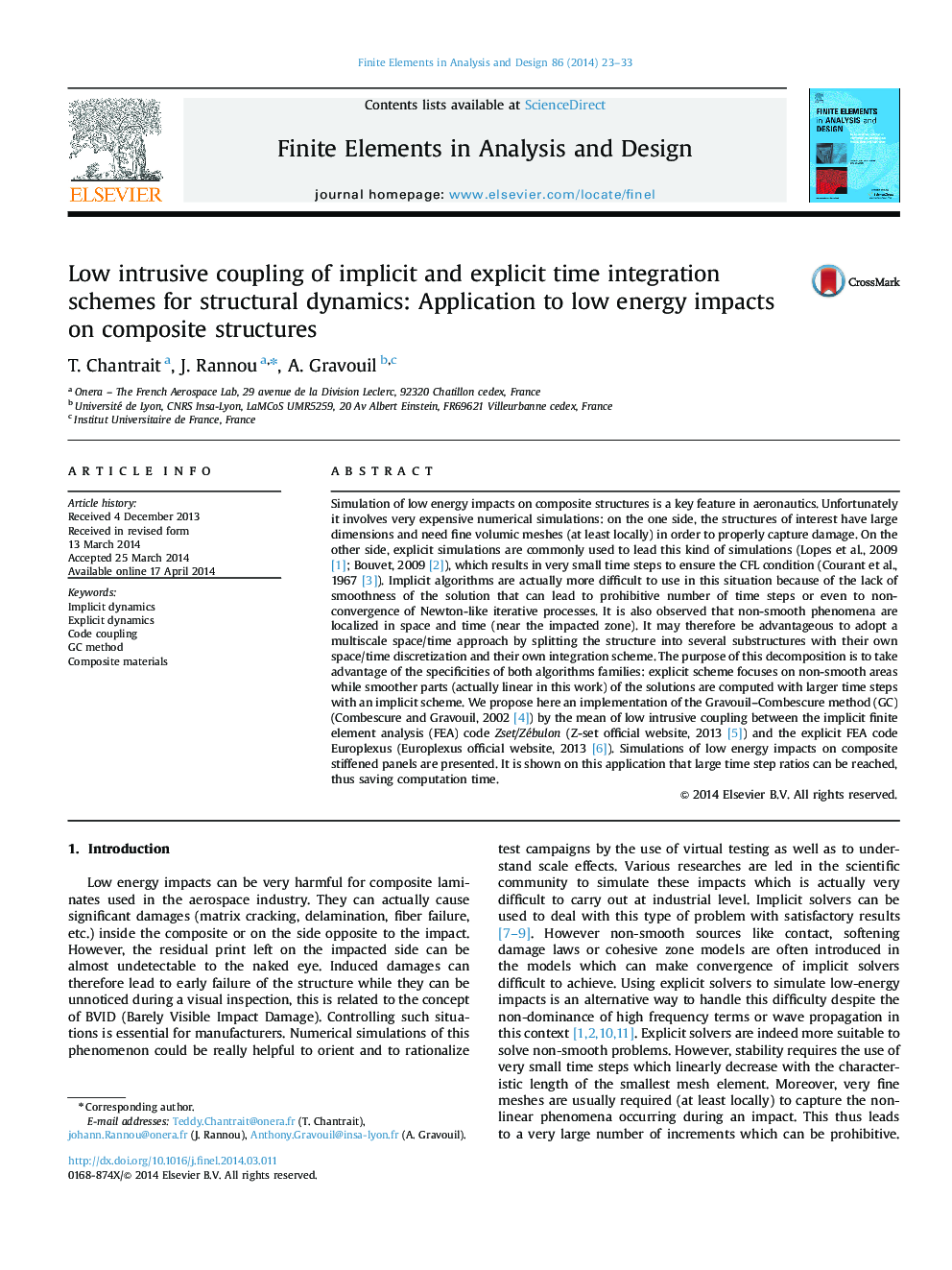| Article ID | Journal | Published Year | Pages | File Type |
|---|---|---|---|---|
| 514336 | Finite Elements in Analysis and Design | 2014 | 11 Pages |
•Non-intrusive GC implementation.•Industrial code-coupling.•Simulation of low energy impact on laminated stiffened panel.•Python interface to finite element codes.
Simulation of low energy impacts on composite structures is a key feature in aeronautics. Unfortunately it involves very expensive numerical simulations: on the one side, the structures of interest have large dimensions and need fine volumic meshes (at least locally) in order to properly capture damage. On the other side, explicit simulations are commonly used to lead this kind of simulations (Lopes et al., 2009 [1]; Bouvet, 2009 [2]), which results in very small time steps to ensure the CFL condition (Courant et al., 1967 [3]). Implicit algorithms are actually more difficult to use in this situation because of the lack of smoothness of the solution that can lead to prohibitive number of time steps or even to non-convergence of Newton-like iterative processes. It is also observed that non-smooth phenomena are localized in space and time (near the impacted zone). It may therefore be advantageous to adopt a multiscale space/time approach by splitting the structure into several substructures with their own space/time discretization and their own integration scheme. The purpose of this decomposition is to take advantage of the specificities of both algorithms families: explicit scheme focuses on non-smooth areas while smoother parts (actually linear in this work) of the solutions are computed with larger time steps with an implicit scheme. We propose here an implementation of the Gravouil–Combescure method (GC) (Combescure and Gravouil, 2002 [4]) by the mean of low intrusive coupling between the implicit finite element analysis (FEA) code Zset/Zébulon (Z-set official website, 2013 [5]) and the explicit FEA code Europlexus (Europlexus official website, 2013 [6]). Simulations of low energy impacts on composite stiffened panels are presented. It is shown on this application that large time step ratios can be reached, thus saving computation time.
